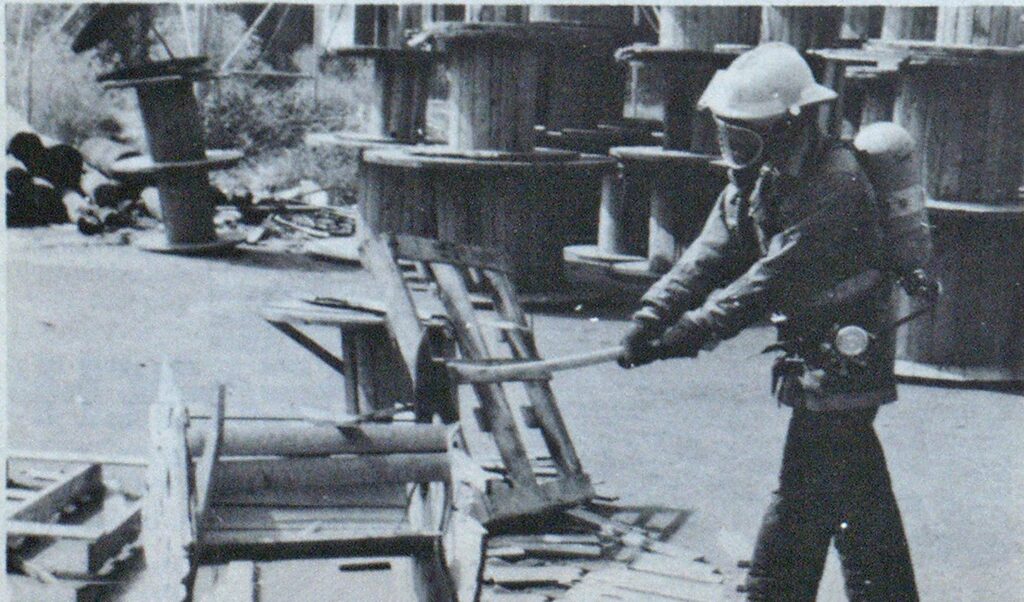
Fitness Efforts Based on Fire Tasks
features
A physical fitness program built around realistic fireground evolutions has been initiated for recruits in the San Jose, Calif., Fire Department.
Believing that many injuries to fire fighters can be directly attributed to poor physical condition, the department stresses the safety aspects of fitness. Each recruit becomes responsible for the prevention of fitness-related injury to himself and to fellow fire fighters.
We know there are times when two or more fire fighters engaged in the same effort experience different physical effects. The mental state of an exhausted fire Fighter also contributes to decreased functioning. San Jose’s program addresses and improves both fitness and confidence in fire fighting abilities.
Recruits attend an 11-week academy. Each day begins with a basic set of exercises to increase strength, endurance and agility. The daily exercises are done in groups of 10, lasting 15 to 20 minutes. For endurance, emphasis is placed on continuous exercise. The recruits perform stretches, jumping jacks, squats, sit-ups, push-ups, a sixstory run up stairs, chin-ups, a quarter-mile sprint and more stretching to conclude.
After basic conditioning begins, the overall fitness program features weekly exercises simulating actual fire Fighting tasks taught in the first week. Performance on the weekly exercise evolutions is measured for comparison with later evolutions. Each recruit can then note his improvement.
Complete turnout gear
The weekly exercises are performed in complete turnout gear. Recruits are divided into groups of two. To start, they don SCBA. Then they walk 200 feet and begin a three-minute chopping exercise on wood sheathing. This simulates ventilating a roof with a pickhead axe.
Another walk, of 300 feet, takes them to an area where 24 and 28-foot extension ladders and rope bundles are placed. Each team selects a ladder and rope bundle and walks to the tower another 200 feet away. There the team raises the ladder to the second or third floor, depending on the length of the selected ladder.
With the ladder in position, one team member climbs it with the rope bundle and goes on to the fourth-floor balcony. After the First member leaves the rope and returns to the ground, the second also makes the climb to retrieve the rope. Then the rope and ladder are carried back to the original location.
At this point the recruit disconnects his SCBA air supply hose and walks back to the tower. The next part of the exercise will be for the team to conduct a search for a dummy in the basement. When the dummy is found, the drill ends.
Checks air supply
Before reconnecting the air supply hose and descending the stairs, however, each person must evaluate his remaining air supply. Is it enough? At lower levels of conditioning in the first few weeks, he usually finds that his increased breathing rate from the exercises has depleted the air supply. Replacement cylinders are available.
In the later weeks it becomes a prestigious accomplishment to complete the drill with one cylinder containing 45 cubic feet of air. Recruits are not required to complete the drill with one cylinder. In attempting to do so, they improve many of the skills a fire fighter must have, including teamwork, economy of motion and communication in addition to physical fitness.
Observers at each station of the exercises evaluate the recruits. No instruction is offered during the exercise but notes are made for later discussion. The basement area is always dark and the furniture is rearranged weekly to offer new circumstances for the search. An observer remains in the basement with the recruits to evaluate their ability to communicate in the dark. At times the search is recorded for later playback so the recruits can evaluate themselves.
The times recorded for donning SCBA, placing and returning the ladder, and finding the dummy are totalled for an overall comparison week to week. So that no recruit performs the drill twice with the same person, the teams are rotated.
More than fitness
The program provides more than a higher level of physical fitness. From the realistic exercises, recruits gain confidence performing routine tasks associated with fire fighting. Each person learns more about his capabilities and limitations. With this knowledge he can better assess his ability on the Fireground. This in turn should prevent an overextension of effort leading to injury.
It is hoped that a standard of performance can be created for all department members from this physical stress evaluation. The standard would be reviewed annually much like company performance standards are reviewed now. Even though modern technology has created many time and effort-saving devices for the fire fighter, there is no substitute for good physical conditioning.



